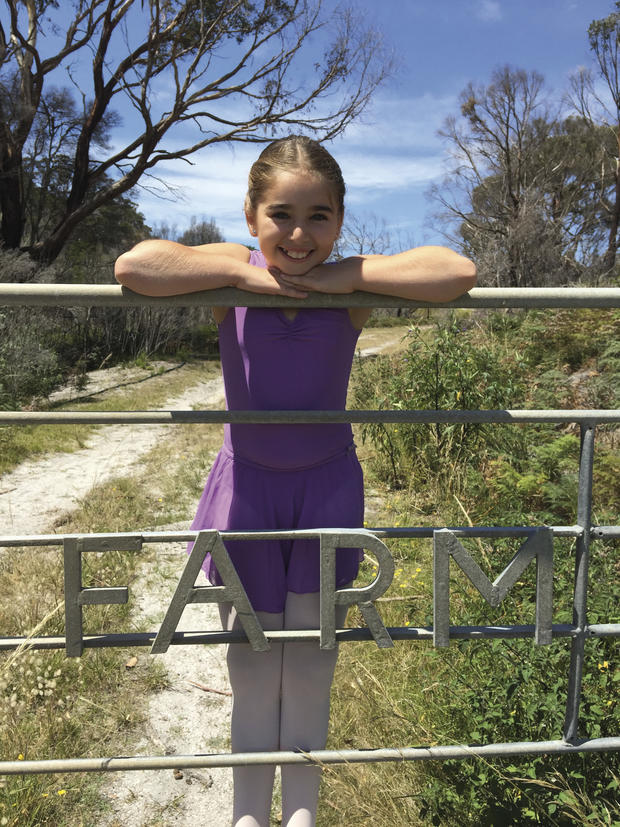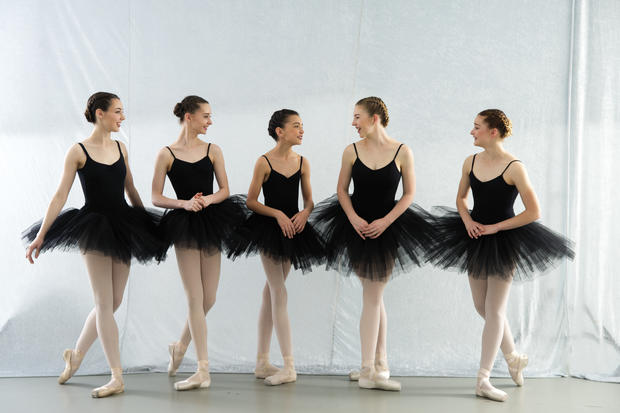Ballet off the beaten track
These clever teachers have met the challenges of ballet in the bush, writes Michelle Dursun. This article first appeared in the April/May 2017 issue of Dance Australia.
WHEN Josephine Woodberry was a young girl growing up in the country, she was fortunate to have a ballet teacher visit her town, otherwise she would never have discovered her passion for dance. Now the principal of Brunswick School of Dance (BSOD) in Melbourne, she is still very aware of the challenges facing country people in gaining access to quality dance classes. While dancers living in capital cities face multiple choices in terms of studios and progression of their studies from part-time to full-time, this is certainly not the case for rural students.

So three years ago Woodberry set up the Online Ballet Studio, an extension of her established Melbourne ballet school, Brunswick School of Dance. This web-based program provides beginner ballet lessons for dancers aged five to 12 years of age. For as little as $3 per month, students gain access to "dance along" video classes and foundation tutorials on the school's webpage. Every month a new lesson is published to keep students engaged. The lessons feature children from the BSOD being taught by Josephine in a studio setting. In addition to the online classes, students receive a complimentary ballet uniform (including ballet shoes) with Energetiks leotard for boys and girls, as well as feedback and access to tutorials and archived lessons.
The Online Ballet School’s reach is wide. More than a thousand students are enrolled with “students spread across all corners of Australia as well as overseas”, says Woodberry. The school sponsors a student in Nigeria and has others enrolled in Gambia. Australian examples include “a school in remote Queensland which is facilitating ballet lessons for students after school, as well as a family doing distance education with a governess on a cattle station in NSW”.
While programs such as this are really helping to provide access for beginner students, at the other end of the scale there are challenges for families of talented dancers attending regional schools who have progressed through the syllabus at their local studio and are wanting to access full-time ballet studies.
One of the dance schools grappling with these challenges is the Karen Ireland Dance Centre in Lismore, NSW. Established in 2000, the school has 85 enrolled students and has recently established a Part-Time Intensive Program (PTI), which has five enrolled students (including Josh Green, 16 years, who started ballet at the beginning of 2016 and recently achieved a high distinction for his Intermediate ballet exam). The PTI was introduced to bridge the gap between after school classes and full-time dance studies.
The program has evolved gradually, says Kimberley Garlick, one of the teachers at the school. “About four years ago we had a few students preparing for their major exams so Karen started taking them for class instead of them doing sport at school,” she says. Then in 2015 the school had a few students who were competing at the Alana Haines Awards in New Zealand and they received permission from the school to have one day a week off school to prepare for the competition.

The PTI then grew to a three day program in 2016 and is now run as a four day program with students completing their school work through Distance Education. Garlick explains that, having witnessed the challenges of young students having to move away from their country home to a city life at a very young age, the PTI Program is giving students the option of remaining at home while pursuing their dream. Such schemes are totally dependent on the dedication and commitment of the teachers involved. For this Lismore dance school, the recipe seems to be working, as they have seen a raft of success in recent years. Student Layne Hampson (16 years) reached the semi-finals of Genèe International Ballet Competition in 2016; Kayla Van Den Bogert (15) made the finals in the Youth America Grand Prix in 2016 as well as the semi-finals in the Robert and Elizabeth Albert Scholarship in Sydney, and Caitlin Garlick (13) reached the finals of the Jacqueline Moreland Awards in 2016.
While the option to study dance on a more regular basis might delay the need for students to move away in the short term, inevitably, if they are serious about a ballet career, they must move on. Garlick says graduates of her school, Olivia Paine and Bridget Mulholland, have taken up full-time studies at the Australian Ballet School with Holly Guthrie (11) successfully auditioning for the Australian Ballet School Interstate Program for 2017.
Distance is one of the major challenges. Currently two of the students at the Karen Ireland Dance Centre, Kayla Van Den Bogert and Caitlin Garlick, are combining their PTI Program studies with their place in the Queensland Ballet’s Junior Extension Program. Van Den Bogert commenced in the program in 2015 while Garlick has started this year. The families share the 2.5 hour drive to and from Brisbane every week.
One of the other challenges facing rural dance schools is attracting talented and committed teaching staff. Apart from its pool of regular teachers, the Karen Ireland Dance Centre is fortunate to be able to draw on the talents of past pupils as guest teachers, including Rhiannan Beardow (Genèe semi-finalist), Madelaine Ireland and Olivia Paine (Melbourne City Ballet company member). Garlick is also looking forward to having Benjamin Stuart-Carberry, an ABS graduate and former company member of the Australian Ballet, teaching pas de deux classes once a week this year.
Despite all the challenges, there are benefits in belonging to a small regional dance school. Apart from the community feel and the sharing of costumes, Garlick explains, “classes are generally smaller allowing for more focused attention and encouragement”. Additionally she says there “is a genuine desire to help each other” with everyone sharing in the successes of students. “The school really becomes your dance family and everyone wants everyone to succeed”.
With the goal of helping passionate and dedicated students find their path towards a career in dance, both the Brunswick School of Dance Online Ballet Studio and the Karen Ireland Dance Centre are creating access and opportunities for rural and regional dancers.
For more information on the Online Ballet Studio at Brunswick School of Dance head to: www.brunswickdance.com.au/bsodonline
This article was first published in 2017, in the April/May edition of Dance Australia. uy Dance Australia from your favourite magazine retailer or subscribe here, or purchase an online copy via the Dance Australia app.



